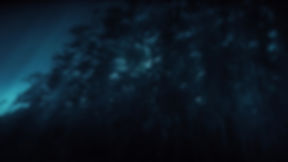
Kora
4K Video, 16 min 31 sec, 2011-2012
Kora installation, 2012
Kora is both a type of pilgrimage and a type of meditation in the Tibetan Buddhist tradition. Kora is performed by making a walking circumambulation around a temple, stupa, or other sacred site. Kora many be performed while spinning prayer wheels, chanting mantra, counting mala, or repeatedly prostrating oneself.
Many consider Mount Kailash the most sacred mountain in Asia. Four religions - Buddhism, Hinduism, Bön, and Jainism – worship this remote mountain, located 900 miles west of Lhasa, as the center of the spiritual realm. For thousands of years Hindu pilgrims and Tibetans have revered the Himalayas as an embodiment of the divine; the presence of the lone towering Kailash peak is the ultimate seal of this sanctity. Pilgrims believe that by circling Mount Kailash by way of an arduous 34 mile-long path, one can cleanse the sins of a lifetime.
My desire to film this mystical landscape in Tibet preceded my knowledge of the existence of the mountain itself. In the summer of 2007, I was mourning the loss of my daughter. My bearings shattered and drowning in sorrow, I sought spiritual sanctuary in Buddhism. One day, I came across an album by Tibetan Buddhist singer Kelsang Chukie Tethong. I was immediately captured by her voice—a sound so serene and bright it compelled me to close my eyes. At that moment, a vision unfolded in my mind; one with the vivid image of wind-swept plains, a deep blue sky, and distant snowcaps. Later I was shown an image of Mount Kailash by a Tibetan monk. I knew immediately the journey to Tibet’s sacred mountain would be the most important task for me in the coming years.
In the summer of 2011, I embarked on a four-week expedition to western Tibet, including a four-day kora around Kailash. The mountain seems perfect and its shape, deliberate beyond any natural thing. Such form inherently points to a higher reality—a realm that predates the existence of language and religions. The harsh elements and expansive landscape turned my thoughts inward. There was no immediate enlightenment, but gradual realization—that the pilgrimage is an external mirror to my solemn confrontation with past and future. The kora, as a circle, has no beginning or end.
Music composition by Aaron Travers and Melody Eötvös
Aaron Higgins, field recording, camera co-operator
Federico Agostini, solo violin
Warren Haggerty, solo cello
Ji-Woon Jung, violin
Erin Rafferty, viola
Melody Eötvös, electronic sound performance
岡仁波切峰可謂是亞洲第一神山。座落於拉薩西方1200公里,包含佛教、印度教、苯教,及耆那教等四個宗教並尊這座山為聖地。千年來西藏信眾一向視喜瑪拉亞山脈為神聖的化身,而聳然矗立的岡仁波切峰更是其中的最高體現。它終年積雪的峰頂彷彿從聖湖瑪旁雍錯邊雄偉地昇起,讓人不禁為這非似人間的景色感到目眩神往。除了磅礡的景觀, 它金字塔般的四面山形和山腳下四條大河的源流,也對應著佛典形容的世界中心。 信徒們相信,如果克服這50公里艱難的高海拔山道轉行一圈,人們可以洗滌一世的惡業。
在還不知道岡仁波切峰的存在之前,我似乎已在潛意識裡嚮往這個朝聖經驗。2007年夏天,我的女兒以四歲幼齡因血癌過世。 悲慟難以自拔之際,我轉而於參佛禮拜中尋求慰藉。有一天無意聽到一張西藏歌手葛莎雀吉的專輯,我立刻被她清脆高亢的的歌聲深深吸引。歌聲中轉折溫柔的佛頌,讓我忍不住閤眼落淚,像是深受委屈的孩子在母親懷裡痛哭。閉著的眼簾下,我發現一片充滿慈悲包容的景色——疾風中的廣大草原,深藍的天空,和遠處連綿的純白峰頂。稍後一位藏僧因我提起這個經驗,告訴我有關神山的典故。那一天,我第一次看見岡仁波切峰的照片。它像是為我尋覓以久的難題指出一條霍然開朗的路徑。當時的震憾明確地向自己預言著,到西藏轉山將是我未來幾年最重要的朝聖創作之旅。
2011年夏,我啟程深入西藏西部偏遠地區。一個月的旅程中,我兩度前往岡仁波切峰,並且花了近一周的時間轉山拍片。親臨聖地,岡峰正如想像中的完美無瑕。它的山形像是經歷刻意雕塑,讓我不自覺地聯想到一種超越人界,並且比宗教語言還要古老的力量。在這個環境下,稀薄的空氣和無孔不入的冰雪讓我的思緒沈澱。蹣跚走來,我不期待即時的頓悟,但得到了許多漸進的體會。我瞭解到朝聖的路是我面對過去及走向未來的一面鏡子。山是如此的浩大,而我的努力如此渺小。每一步專注在當下的腳步,提醒著我的目標並不是在路的盡頭。想像著這段令人謙卑的旅程正在我的生命中不斷延伸,我似乎可以看見在廣闊時空裡,那個安頓我憊累靈魂的所在。
Kora 在藏文的意涵是指繞著寺院、佛塔,或是任何神聖的地境轉圈行走。它是一種朝聖及修行的方式。轉行的過程中,信眾經常轉動手中的法輪,頌經、數念珠,甚至以一步一跪拜的方式趨進。
Saga Dawa, 56 min, 2011-2012

Installation shot, Red Brick Art Museum, 2019